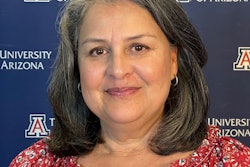Hispanic-serving institutions make up only 6 percent of all colleges, but enroll half of all Hispanic college students, raising questions in a new study about outreach and diversity efforts at majority schools.
“There are more than 3,000 higher education institutions in the U.S., and all of them say they aspire to create a more diverse student body. While the high-achieving students that took part in our research could have gone anywhere, they largely chose HSIs,” said Sarita Brown, president of Excelencia in Education, the Hispanic education think thank that conducted the study.
“Latino students are sending a clear message on what they value in a college. If mainstream colleges and universities truly want to be more diverse, they should take note,” Brown said in a statement.
}The Ford Foundation-sponsored study, titled “Choosing Hispanic-Serving Institutions (HSIs): A Closer Look at Latino Students’ College Choices,” also finds that most Hispanics enrolled in HSIs didn’t do so intentionally, and are motivated by factors such as open admissions policies, locations in close proximity to large Latino populations, and cost. Subsequently, many colleges that fit into that criteria reach the 25 percent threshold qualifying them for federal HSI designation quickly.
“So many of these students are first-generation college-goers. And that means they don’t have the kitchen-table conversations about college options and trade-offs that might be occurring in families where at least one parent has gone to college,” says study author Dr. Deborah A. Santiago, vice president for policy and research at Excelencia in Education. “That level of awareness by institutions at whatever level of selectivity is absolutely critical. There has to be that awareness within the institution that they’re reaching out to students that don’t have that intrinsic knowledge.”
The Excelencia study is based on focus groups and interviews with 103 Latino students from college campuses around the country. In addition to giving reasons why most Latinos favor HSIs, they also listed some recommendations on how majority schools can improve recruitment of Hispanics. They include aggressively recruiting students, as military recruiters do, by engaging and reaching out to entire families and providing accurate information about the on-campus student resources.
“In a lot of more selective institutions, we expect students to find us, and to apply in a rigorous way in our application process. We often find that if students have limited information and choices, they don’t see those institutions as a possibility,” Santiago says. “If these institutions want to make serious contributions, they’re going to have to find ways to reach out to these students and not just expect these students to come to them,” she adds.
Also, according to the report, nearly half — 46 percent — of HSIs are community colleges, so students in the focus group indicated that four-year schools should also step up efforts to provide information and assistance to potential transfer students while they are enrolled at two-year institutions.
“Majority institutions, those that aren’t HSIs, need to be partnering with community colleges, because these community colleges actually have our students. If they want to reach them, they need to go to where the students are,” Santiago adds.
Nonprofit D.C.-based Excelencia in Education aims to influence public policy via data-driven analysis as to what best contributes to Hispanic students’ higher education success. For more information, visit Excelencia’s Web site at www.EdExcelencia.org.
–David Pluviose
There are currently 0 comments on this story.
Click here to post a comment
© Copyright 2005 by DiverseEducation.com















